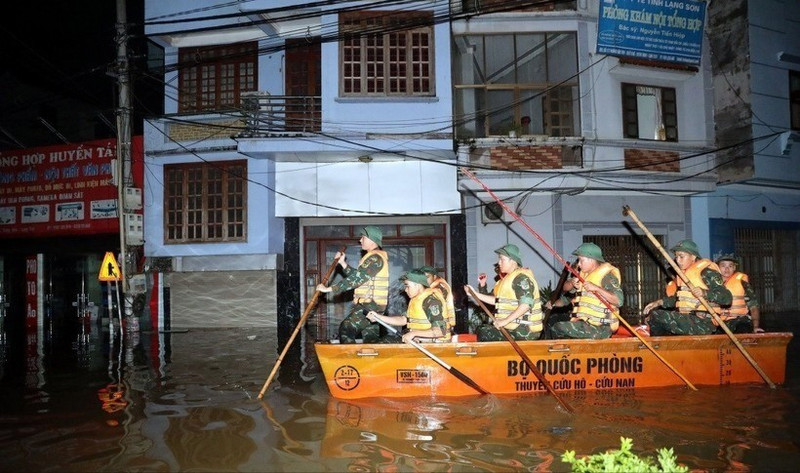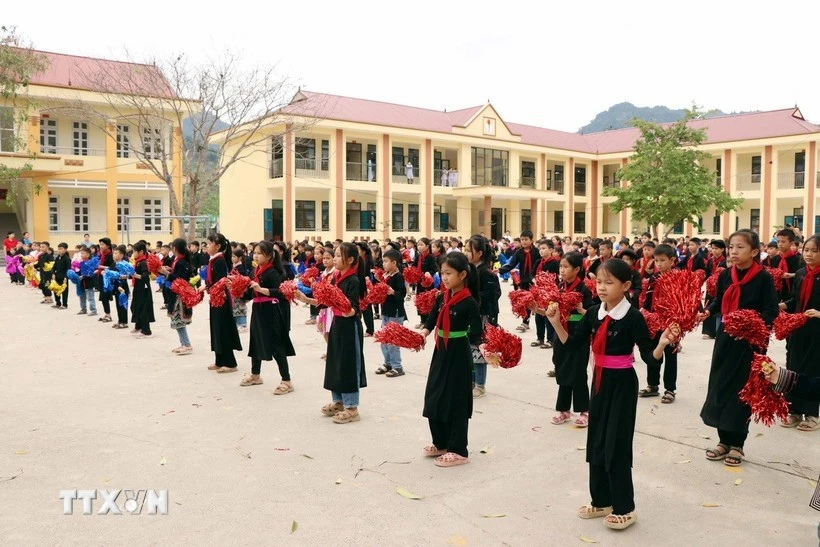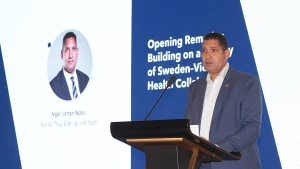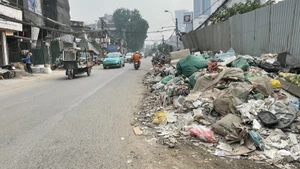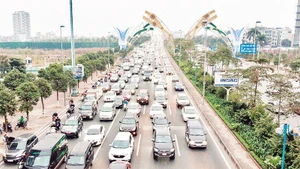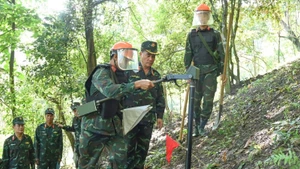As of October 7 evening, more than 4,800 houses were inundated and suffered damage, while major transport networks were badly affected. Local authorities are racing against time to settle the typhoon aftermath and ensure safety for residents in high-risk areas.
Floods, landslides, and traffic congestion were recorded at 493 locations on major routes in Lang Son, Cao Bang, Thai Nguyen, Bac Ninh, and Thanh Hoa provinces, according to the Ministry of Agriculture and Environment’s Department of Dyke Management and Disaster Prevention and Control.
Notably, a 5-metre-wide breach was found at Bac Khe 1 hydropower dam in Tan Tien commune, Lang Son province, prompting the evacuation of downstream residents.
The Northern Power Corporation said that widespread inundation and landslides have severely affected power distribution, leaving over 262,000 customers without electricity. As of 14:00 on October 7, power was restored to about 19,000 customers, only 7.3% of those affected. Thai Nguyen suffered the most severe outages, with nearly 197,000 customers still in the dark, followed by Lang Son (25,000), Bac Ninh (15,000), and Cao Bang (7,000).
Meanwhile, the Viet Nam Railway Authority and the Viet Nam Railway Corporation reported flooding and landslides on the Ha Noi – Dong Dang line in Lang Son and the Kep – Ha Long line connecting Bac Ninh and Quang Ninh provinces. The Viet Nam Air Traffic Management Corporation said nearly 20 flights delayed or diverted due to persistent thunderstorms over Ha Noi.
Cao Bang province faces particularly grave circumstances, with one dead and thousands affected. From the morning of October 6 through midday October 7, the province experienced widespread torrential rainfall of up to 200mm, triggering flash floods and landslides and submerging low-lying and riverside areas.
In Tuyen Quang province, numerous landslides were recorded, particularly along the Son Duong bypass, forcing authorities to close the route to ensure public safety. Rescue teams, military and police, and youth volunteers have worked to clear debris, dredge drainage network, and reinforce dikes and reservoirs.
In Thai Nguyen province, heavy rain caused severe flooding and a massive sinkhole on National Highway 3B, paralysing traffic on this vital route. Emergency crews arranged barricades, installed warning lights, and regulated traffic flow.
Ha Noi, meanwhile, faced widespread flooding on October 7 due to prolonged downpours, with several areas receiving rainfall of up to 350mm. Pumping stations were operated at their maximum capacity to drain water from 90 flooded locations across the capital city.
